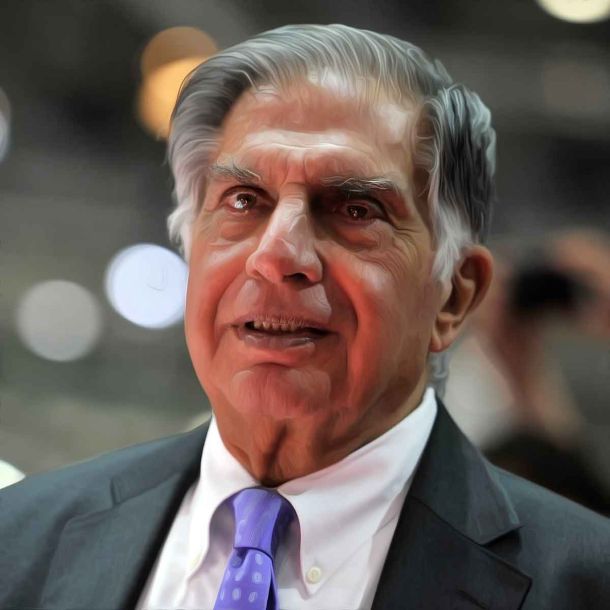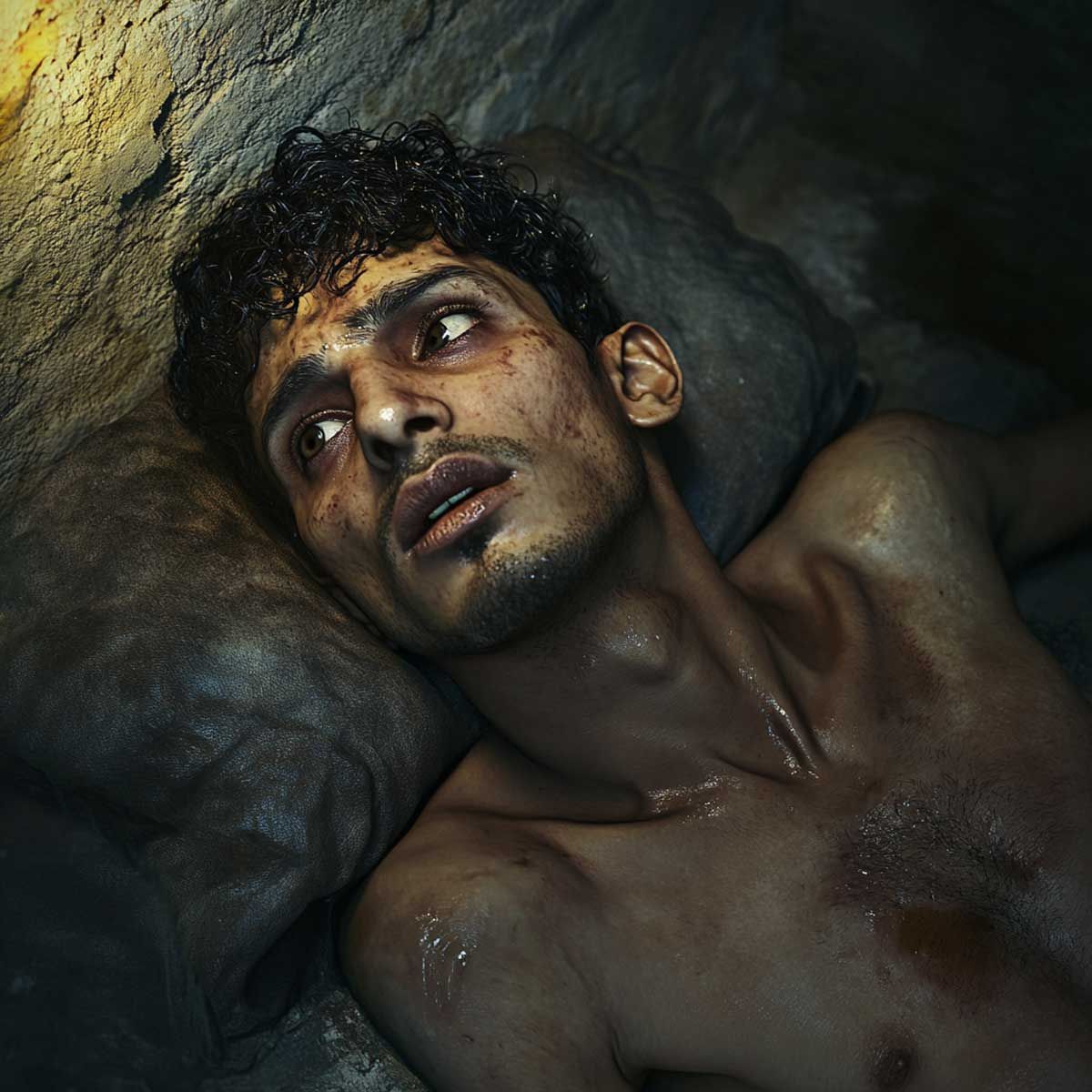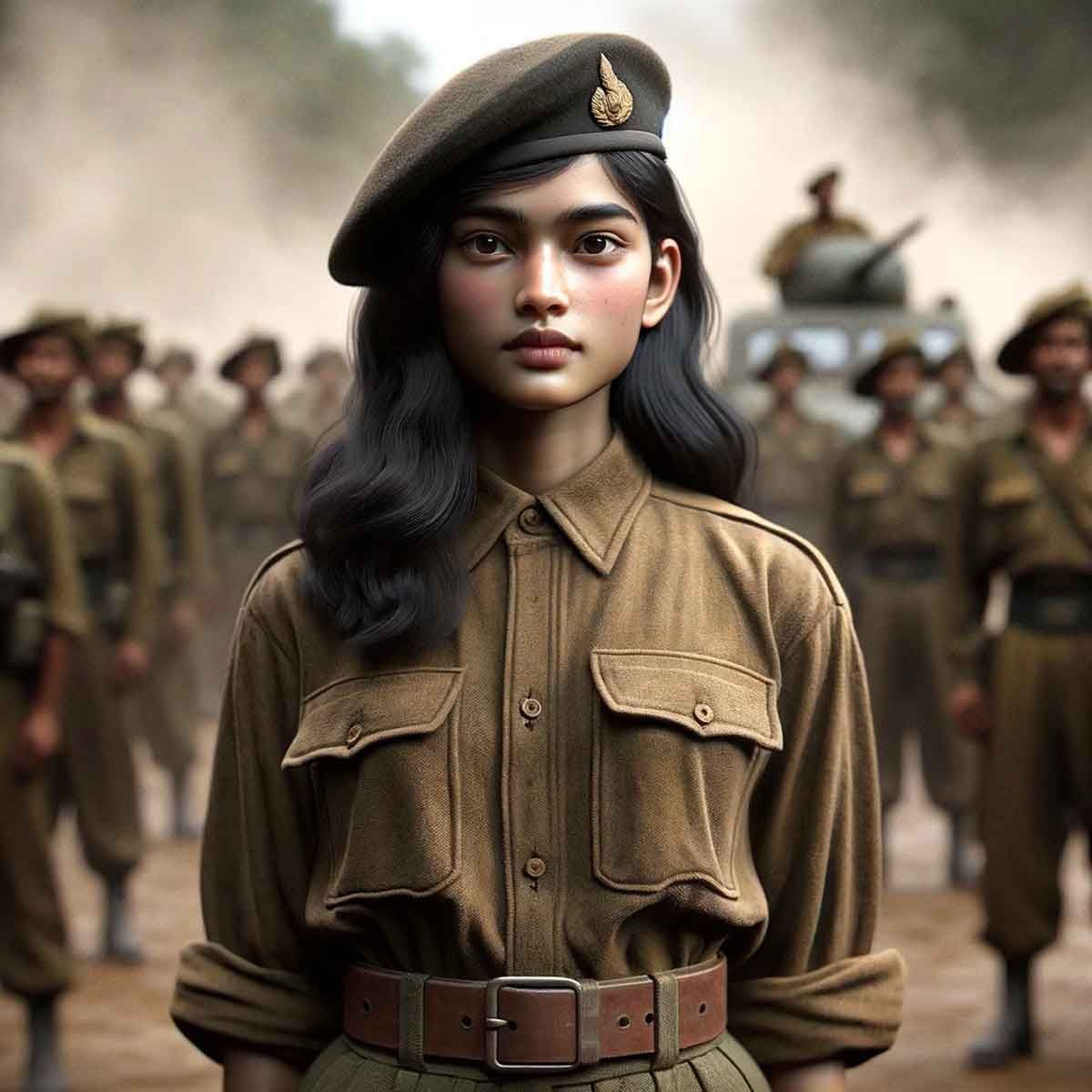More Coverage
Twitter Coverage
Satyaagrah
Written on
Satyaagrah
Written on
Satyaagrah
Written on
Satyaagrah
Written on
Satyaagrah
Written on
Join Satyaagrah Social Media
Why is Vibhishana not considered a traitor - Loyalty Versus Righteousness
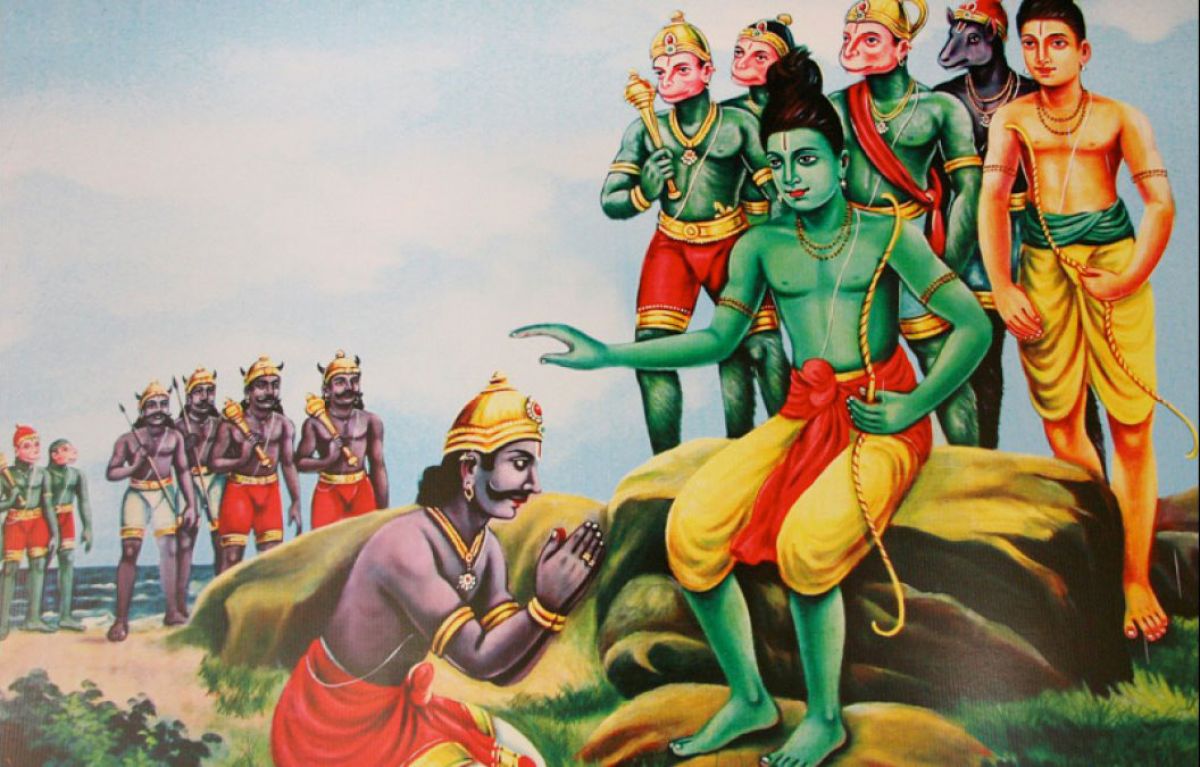
Page 2 of 3
Maricha sped away deep into the woods. He then shouted out Lakshmana's name, imitating the voice of Rama. Thinking that his brother was in some kind of trouble, Lakshmana drew a line on the ground with the tip of his arrow, requesting Sita not to cross it. He told her that this Lakshmana Rekha would protect her, as long as she stayed within it.
Ravana then disguised himself as a mendicant and came begging for alms. Sita came out with some rice and requested him to come get it from her. Knowing that he had to lure Sita out of the Lakshmana Rekha, he refused and asked her to come give it to him instead. Just as Sita stepped out of the protective line, Ravana lifted the entire piece of earth that she was standing on. Placing it on his Pushpakavimana (flying chariot), he sped away with her towards Lanka. Some versions of the Ramayana narrate that the lady Ravana abducted was actually Maya Sita, her illusory double. The actual Sita, these versions claim, took refuge with Agni, the God of Fire.
On the way to Lanka, the vulture-king, Jatayu, heard Sita's screams for help and realized that Ravana was kidnapping her. Jatayu tried valiantly to protect Sita. He fought Ravana and gave him a hard time. However, the demon-king eventually chopped off both of Jatayu's wings and seriously wounded him. The latter fell to the ground and could only helplessly look on as Ravana took Sita away on his chariot. Rama and Lakshmana returned to find Sita missing and Jatayu so seriously injured. Rama gently placed his head on his lap. The vulture narrated the entire incident and then breathed his last on Rama's lap, thereby instantly attaining moksha (salvation).
Ravana kept Sita prisoner at his Ashokvan and ordered all his female attendants to take good care of her. He held her captive for a year, during which time he approached her several times, expressing his deep desire to make her his own. Sita refused him each time and maintained her chastity.
In the meantime, Rama met Hanuman and sent him to find Sita. The mighty Hanuman crossed the ocean in one single leap and reached Lanka. He then found Sita at Ashokvan and told her he had come from Rama. He offered to take her back to Rama, but she was insistent that her Lord should come to Lanka, fight and kill Ravana and then take her back with him. Sita then blessed Hanuman and gave him her chudamani, a hair ornament, asking him to give it to her husband. Accordingly, Hanuman returned to Rama and narrated all his experiences in Lanka.
Vibhishana Joins Rama
Vibhishana's was always against Ravana's attitude. He took serious exception to his brother's heinous and cowardly act of kidnapping Sita. When he could not take it anymore, he approached his mother, Kaikesi, for advice. Being the wise woman she was, she asked him to go away form Lanka and join Rama. At that time, Rama was busy assembling an army in order to fight Ravana and bring back Sita.
As per his mother's advice, Vibhishana decided to flee Lanka and join hands with Rama. Before leaving, he called his daughter, Trijata, who was guarding Sita in Ashokvan. He asked her to take good care of her. He also told his wife Sarama about his plans and asked her to take good care of herself.
He then secretly left Lanka, with his mace in his hand, also accompanied by two of his favorite demons. It is commonly believe that, while going to meet a warrior to surrender oneself, one should not carry any weapon. However, Vibhishana had a purpose in carrying along his mace.
He was overwhelmed when he finally reached the shores of Rameshwaram where Rama, Lakshmana and the Vanara Sena (Army of Monkeys) were seated. At last, he could have a darshan of his Lord, who he was destined to serve for the rest of his life.
Seeing Vibhishana approach them with mace in hand, Hanuman and Sugreeva thought that he was coming to attack them. But Rama instantly realized why he had the weapon in his hand. The Lord knew that Vibhishana was actually his mace, just as Lakshmana was his Adisesha and his Sankha (Conch) and Chakra (Discus) were his own brothers, Bharata and Shatrughna respectively. It is said that, whenever Vishnu takes an avatara on earth in order to fight and destroy evil, his mace, conch and discus also accompany him in some human form. They then help the Lord to fight all the evil and reestablish Dharma on earth.
Vibhishana approached Rama and humbly fell at his feet. Rama fondly welcomed him into their fold and embraced him.
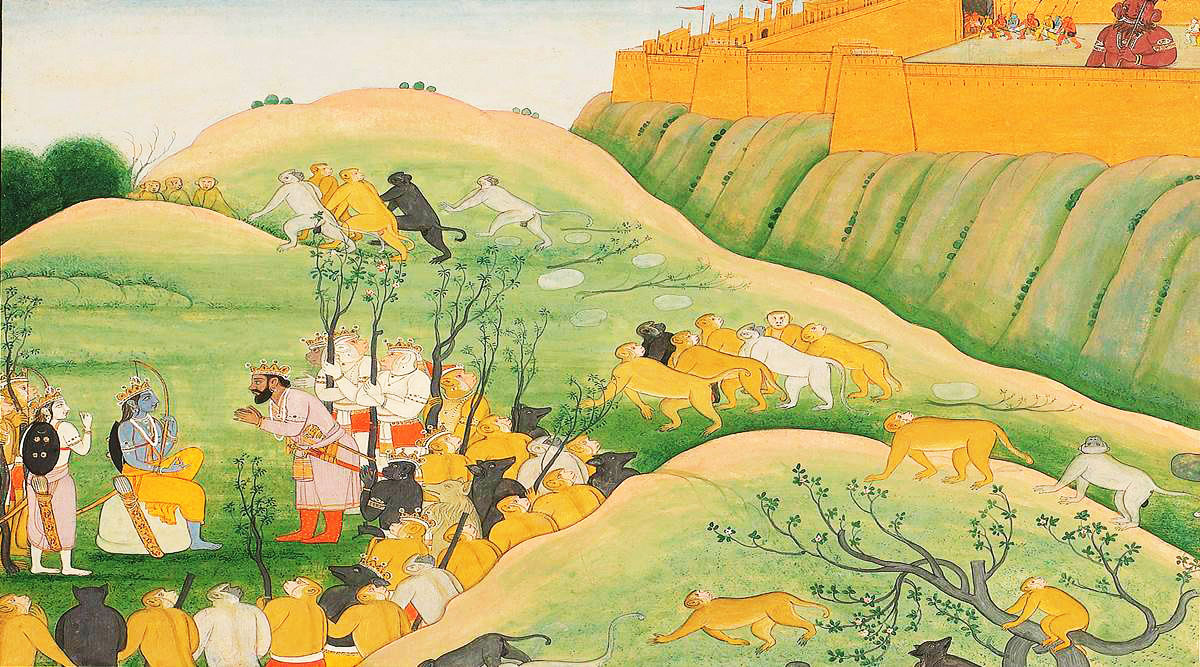 |
Vibhishana is an Invaluable Asset to Rama
Vibhishana proved to be a great asset to Rama and his army, as he divulged all the secrets and tactics of the Lankan army. His main aim was to defeat his brother and see to it that Rama would emerge victorious in the battle. Vibhishana also revealed the secret path to the temple of Mata Nikumbala, the family deity of the Pulatsya Dynasty. There, Ravana's son, Indrajit, was performing a yagna to defeat Rama. Lakshmana immediately went inside and destroyed that yagna, thereby denying him the blessings of their kuladevata.
Indrajit then decided to perform certain rituals and sacrifices to burn Rama to ashes. The magic tricks he employed for the same created much confusion amongst Rama's army. Vibhishana, being an asura himself, immediately recognized what was happening and why. He employed counter tricks to nullify the power of Indrajit's black magic.
Vibhishana also warned Rama and Lakshmana about the blackberry tree, under which Indrajit performed all his magic rituals. The place was littered with bodies of humans, who had been sacrificed during the rituals. He informed them that Indrajit's powers would be magnified when he sat under the tree and advised them to somehow pull him away from that tree.
Once the setubandhana (construction of the bridge) to Lanka was completed, Rama crossed over to that country and challenged Ravana to battle. However, in spite of fighting long and hard, he could not kill the demon king.
Seeing the potential damage that his brother was capable of causing to Rama's army, Vibhishana stepped forward and revealed the secret of Ravana's death to Rama. Ravana stored the Nectar of Immortality in his navel and, in order to slay him, it was necessary to hit him in the navel and dry out the nectar. Rama immediately pulled out an arrow, took aim and shot it at Ravana. The arrow found its mark and pierced Ravana on his navel, instantly killing him.
Rama Crowns Vibhishana the King of Lanka
Rama then freed an elated Sita from her captivity and prepared to take her back to Ayodhya. Before leaving, he showed Vibhishana his real form as Sri Maha Vishnu, blessed him and also crowned him as the King of Lanka. He then asked him to rule wisely, keeping the Dharma in mind, at all times.
Vibhishana: An Epitome of Devotion
Vibhishana was an epitome of devotion and selfless service. After ascending the throne of Lanka, he worked toward transforming his subjects and leading them on the path of Dharma or righteousness. His wife, Sarama, was also a pious lady and helped him in all his efforts.
 Support Us
Support Us
Satyagraha was born from the heart of our land, with an undying aim to unveil the true essence of Bharat. It seeks to illuminate the hidden tales of our valiant freedom fighters and the rich chronicles that haven't yet sung their complete melody in the mainstream.
While platforms like NDTV and 'The Wire' effortlessly garner funds under the banner of safeguarding democracy, we at Satyagraha walk a different path. Our strength and resonance come from you. In this journey to weave a stronger Bharat, every little contribution amplifies our voice. Let's come together, contribute as you can, and champion the true spirit of our nation.
 |  |  |
| ICICI Bank of Satyaagrah | Razorpay Bank of Satyaagrah | PayPal Bank of Satyaagrah - For International Payments |
If all above doesn't work, then try the LINK below:
Please share the article on other platforms
DISCLAIMER: The author is solely responsible for the views expressed in this article. The author carries the responsibility for citing and/or licensing of images utilized within the text. The website also frequently uses non-commercial images for representational purposes only in line with the article. We are not responsible for the authenticity of such images. If some images have a copyright issue, we request the person/entity to contact us at This email address is being protected from spambots. You need JavaScript enabled to view it. and we will take the necessary actions to resolve the issue.
Related Articles
- Biggest Wonder of the World : Kitchen of Lord Shri Jagannath
- Culture And Heritage - Meenakshi Temple Madurai
- Jagannath Temple administration issues clarification on proposed sale of temple lands
- An Artisan Heritage Crafts Village: Indigenous Sustainability of Raghurajpur
- The forgotten temple village of Bharat: Maluti
- अथ रामचरितमानस प्रकाशन कथा: गीता प्रेस, गोरखपुर ने 1938 से रामचरितमानस का प्रकाशन शुरू किया
- Srikalahasti Temple, Dakshina Kailash
- Hindu Survival: What Is Needed To Be Done?
- Why India’s temples must be freed from government control
- A Different 9/11: How Vivekananda Won Americans’ Hearts and Minds
- Shri Murudeshwar Temple: Home To The World’s Second Tallest Shiva Statue
- Lakshmi Narasimha Swamy Temple, Antarvedi, Andhra Pradesh
- रामचरितमानस एवं उसके अंग्रेजी अनुवाद तथा हिंदी के अकेडमिक्स का दोहरा रवैया
- Righteousness vs Loyalty: Prince Rama obeys his father and leaves the Ayodhya kingdom
- A new symbol of Hindutva pride, Shri Kashi Vishwanath Temple Corridor




